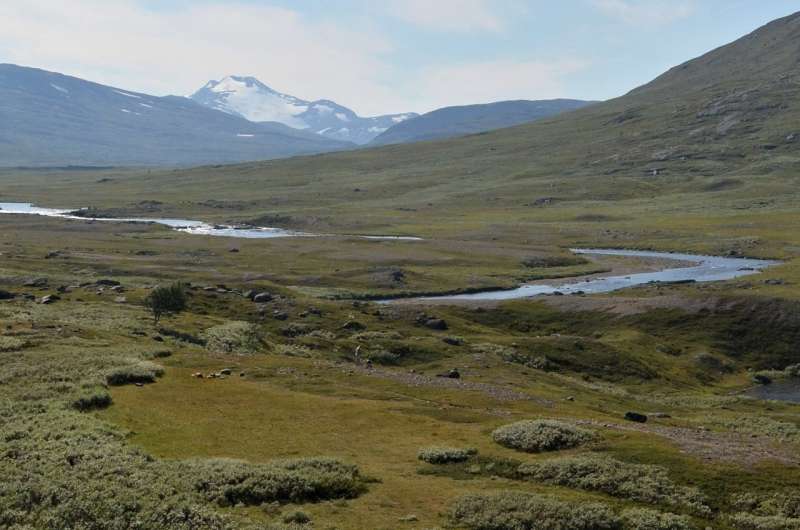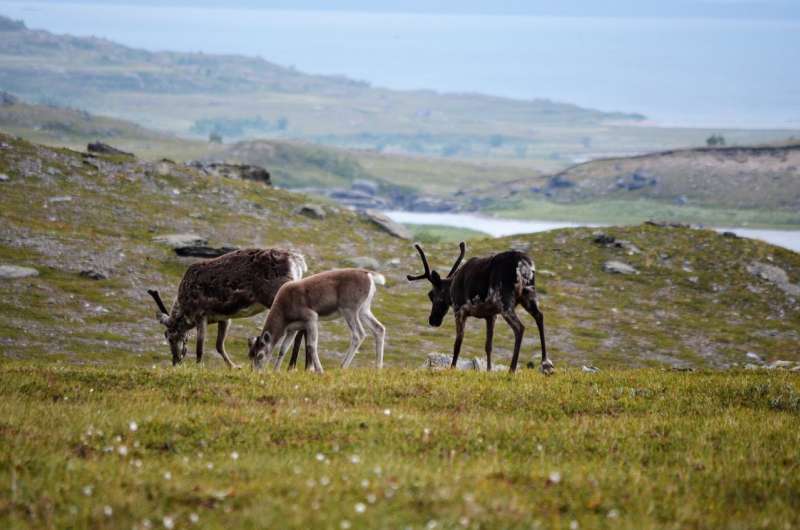Traces of historical reindeer grazing can still be observed after 100 years

With the holiday season around the corner, most people may first think of reindeer as Santa Claus' trusted helpers. But it turns out that reindeer are not only good at pulling Santa's sleigh; they can also teach us important lessons about the functioning of ecosystems. By studying small meadows in the Swedish mountains, formed by historical traditional reindeer herding practices, Dagmar Egelkraut revealed long-lasting ecological effects induced by reindeer grazing in her doctoral research.
Grazing by reindeer often results in a vegetation shift from tundra dominated by dwarf birch, crowberry and willows, to a meadow-like vegetation dominated by grasses, sedges and forbs. Dagmar Egelkraut studied how persistent these vegetation shifts are, as well as the processes that are contributing to their stability.
"Even long-term ecological experiments typically run only a few decades. We wanted to study herbivore effects on tundra ecosystems over longer time scales, so we had to come up with a different solution," says Dagmar Egelkraut.
She used the impact from historical traditional reindeer herding in Padjelanta National Park as a natural, century-long experiment. More specifically, she studied 'historical milking grounds." These are locations formerly used for the gathering and milking of reindeer during times when a more nomadic and intensive reindeer herding tradition was common (late Middle Ages up to the early 1900s). Reindeer were concentrated regularly during several centuries on the same locations, resulting in dramatic vegetation shifts on a local scale. Even though the historical milking grounds have not been in active use for about 100 years, they are still easily recognized in as distinct, oval-shaped meadows amidst a mostly shrubby tundra vegetation.
Dagmar Egelkraut found that historical milking grounds were strikingly stable over time, and similar to actively grazed areas in many ways.

"This is fascinating because reindeer densities in these patches are much lower nowadays, compared to the densities that caused the vegetation change in the past," says Dagmar Egelkraut.
These findings suggest that historical milking grounds represent an alternative stable state, maintained by a number of processes, including increased nutrient cycling rates, soil biotic and abiotic processes, and selective feeding on shrubs by lemmings and voles, which prevent the surrounding vegetation from invading in the historical milking grounds.
These historical milking grounds can also be used to study the effects of plant community changes on carbon storage over large time scales. In contrary to what they had expected, Egelkraut found that the dramatic shift in vegetation and soil processes for centuries had no effect on the soil's capacity to store carbon.
"Carbon storage in arctic systems is important with respect to climate change, but the drivers are still not fully understood. Because we can be certain that our 'experiment' lasted long enough to develop potential differences in carbon storage, our finding adds an important piece to the big puzzle," says Dagmar Egelkraut.
"Being able to work in these sites has been a very exiting journey. Historical milking grounds are the legacy of traditional cultural land use in the past, and much like a beautiful old church, tell us something about how people used to live. At the same time, they offer us a unique opportunity to study long-term ecological processes and ask exciting questions that helped us gain a better understanding of ecological stability, and the functioning of a mountain landscape characterized by reindeer grazing," concludes Dagmar Egelkraut.
Provided by Umea University





















